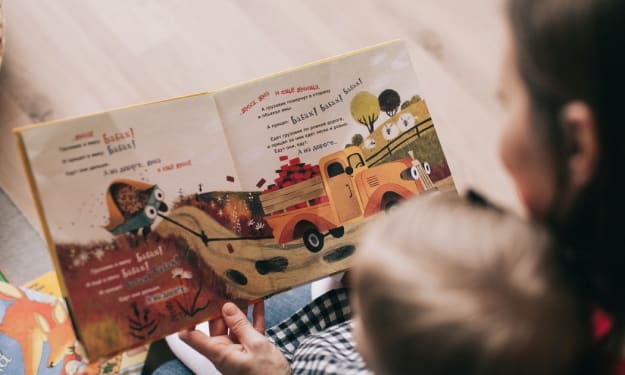Simple Math-Magic for Preschoolers
Easy, fun things to do with young children to prepare them for the world of math

A strong foundation in math is critical to your child’s success in school and an essential gateway into many careers. Students in the US are struggling to build that foundation, and far too many reach middle school without vital number concepts.
The good news is that as a parent of a preschooler, you can do some simple things to prepare your child to excel in math.
Children’s board games teach the one-to-one concept of counting the spaces to advance on a game board in relation to the number rolled on a single die. This is a simple concept to an adult, but it’s an important concept for your child to learn. An excellent beginning game is “Candyland” which also reinforces colors and color names. Games also teach taking turns and introduce ordinal numbers 1st, 2nd, 3rd in a meaningful context. “Sorry” is another terrific kid’s game that teaches number concepts and rule-following.
The next step is games that involve two dice where the numbers are combined to get a total — the beginning of addition.
What is number concept?
Once again, what’s obvious to an adult has to be learned as a young child, and it’s easy to overlook the obvious. What does “five” really mean?
Five can represent five steps or increments on a board game
Five can represent a position in a line, 5th
Five can be represented by 1+4, 2+3, 0+5
These are critical concepts board games teach in a significant and enjoyable manner.
Another fun way to develop number concept is what I call the “Cup Game.” Start with the number three. To play the Cup Game collect three small items, say three colorful buttons or three pennies. Place the three objects between you and your child — count them. Agree that there are indeed three. Using your hands to block your child’s view, cover two of the objects with the cup.
Now the big question — how many objects are covered up by the cup. If they answer, show them what’s under the cup. Whether they are right or wrong, continue with all the combinations, including zero under the cup. Zero is a fundamental concept to understand.
Stay with three until they have it down cold, whatever the combination — that indicates mastery of the number concept of three. Now proceed to four and soon. A preschooler can easily understand “ten” and demonstrate their understanding via the cup game. Be sure to cover every combination, and don’t forget zero. 6 and 4 or 6 and 4, your child should have a clear understanding either way.
But don’t stop there, have fun with it and see if your child can master up to twenty, but always remember to review to reinforce the concepts. And insist on mastery before you move on to the next number. I used this method with my 1st and 2nd-grade classes with the promise of ice cream for mastery to twenty. I bought a lot of ice cream in those years.
Did you struggle with math in school?
I remember avoiding math while selecting college courses. I dropped Calculus and Analytical Geometry only to face it again years later.
Believe it or not, many middle school students are struggling with number concepts this basic. We live in a middle-class, small-sized city of about 100,000. My son teaches middle school math. I hear horror stories weekly about how poorly prepared many students are for middle school math — students who can’t add 5 + 7 in their heads.
American students struggle in math. The latest results of an international exam given to teenagers ranked the USA ninth in reading and 31st in math literacy out of 79 countries and economies. America has a smaller-than-average share of top-performing math students, and scores have essentially been flat for two decades. — USA Today
Building the type of number concept understanding I have outlined above is the heart of the “New Math” parents are often critical about. Most other countries have shifted the focus of math instruction from memorizing formulas as we were taught to a deeper understanding of problem-solving with math.
Classes here (in the US) often focus on formulas and procedures rather than teaching students to think creatively about solving complex problems involving all sorts of mathematics, experts said. That makes it harder for students to compete globally, be it on an international exam or in colleges and careers that value sophisticated thinking and data science.
When your school offers a math night, challenge your misconceptions and attend the session to understand what’s changing in math instruction. Instead of teaching the long division formula we were taught, elementary school teachers will first provide students with a deeper understanding of what we do when we divide something.
If you consider 13 divided by 2, we are really asking how many groups of 2 can be found in the number 13. Before the word division is ever mentioned, the students might be presented with that very problem, and they might not be given pencils and paper at all. Instead, simply a pile of 13 plastic cubes and be asked to solve the problem. How many groups of two can you make out of your 13 blocks?
Everything about New Math is designed to build a deeper understanding of mathematics. We continue to be in the midst of a transition from old to new, and some teachers are resistant to that change.
About the Creator
Gary Janosz
Grandfather, educator, businessperson, writing to understand our world and to make it a better place






Comments
There are no comments for this story
Be the first to respond and start the conversation.